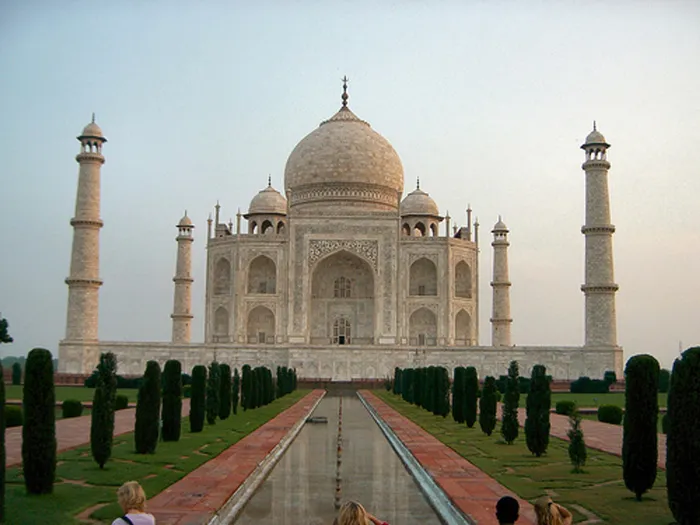Taj Mahal could lose its status

There were headlines about it in The Times of India. Too much had been taken for granted. Rais, our guide, was crestfallen.
"I ask you, sir, can you believe that not enough people have voted? Can you imagine it, madam, that the Taj Mahal might not be one of the new Seven Wonders of the World?"
We made sympathetic noises as our taxi wove in and out of auto-rickshaws, cyclists, jay-walkers and sacred cows out for a midday mooch. Rais took us past the 16th century fort first, lest we think the Taj the only show in town. It is robustly impressive with kilometres of sandstone crenellations. After completing the Taj, poor Shah Jahan was kept here under house arrest by his son, Aurangzeb, religious fundamentalist, iconoclast and all-round killjoy.
We got to see more of the fort than I would have wished, as everything was gridlocked around a huge white cow who'd decided to sit down and become a traffic island for the day.
"Do you know, madam, that Shah Jahan was imprisoned here by his son? He wished to build a second Taj, madam.
A black Taj on the other side of the river where he himself would be buried, but his son did not believe that the country could afford another Taj."
Aurangzeb had a point. He may have been a fanatical desecrator of Hindu shrines, but he put balancing the books before monuments to love.
The Taj Mahal cost 41 million rupees (back in the 17th century). It took 20 years to build and used 20 000 labourers as well as craftsmen imported from Europe, Arabia and Persia.
There's not a centimetre of it that isn't faced in marble or precious stones. Mumtaz Mahal on her deathbed had asked Shah Jahan for a memorial to their love and boy did he deliver.
We were drawing close now and Rais explained that because no petrol or diesel vehicles are allowed within a kilometre of the Taj, we'd have to transfer to an electric bus. These monsters are dinged and scraped and they lack air-conditioning but they weave niftily through the staggered crash barriers designed to stop ram-raiders.
At the east gate Rais went to get our tickets and came back with bottles of water that are given out free to westerners. We then passed through a ropy-looking metal detector, were patted down and sent on our way past row upon row of 17th century guardrooms. At the huge sandstone south gate we pushed against the prevailing tide of local tourists to squeeze into the garden in which the Taj sits in all its majesty.
My wife took one look and burst into tears. "She doesn't like it," I said to Rais. "Do you have another one?"
The scene was both serene and comic. The most beautiful building in the world seems to float above its sandstone plinth. It is more compressed than Humayan's tomb in Delhi, which we'd thought gorgeous. In comparison the Taj Mahal seems squeezed upwards between its four minarets, but this elongation only adds to its gracefulness.
Surrounded by gardens, trees and watercourses it is the perfect image of an Islamic heaven.
Meanwhile, in the foreground ladies of a certain age were queuing up to be photographed looking wistful, winsome or laughing broadly on the bench that Diana, Princess of Wales, made her own.
Settling his pork-pie hat on his head, Rais took us round the edge of the garden to avoid the crowds, then sent us into the tomb itself on our own. "I could come with you, but I would talk all day if you let me."
The interior of the Taj is remarkably well ventilated by marble trellises but it's a crush and an old man with a referee's whistle moves you on.
If it were possible to visit in silence, it would be a truly moving experience, but the Taj Mahal is just too popular.
Since that day I gather Indians have been voting in their tens of thousands to ensure their Taj takes its place as one of the new wonders of the world. We've added our votes too. - Foreign Service